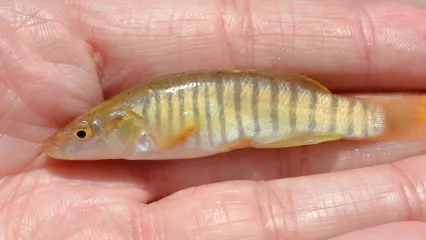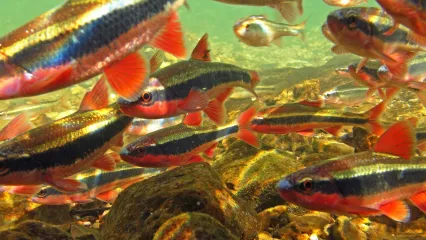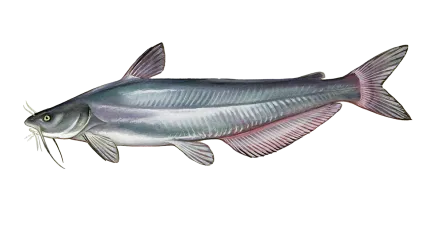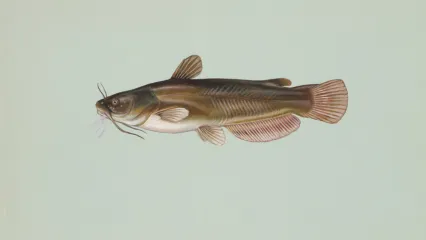
Description
Plains killifish can be easily recognized. The most obvious characteristic is the dark vertical barring that contrasts with the light tan side of the fish. Males tend to have fewer but wider bars than females. During the breeding season, the fins of males (with exception of the back fin) turn bright orange. Killifish are a member of the topminnow family and are adapted to feeding on insects from the water’s surface. Like other topminnows, the lower jaw of the killifish extends past the upper jaw, giving it an upturned mouth. Plaines killifish seldom exceed three inches in length. They mature in their first year and rarely live longer than two years.
Size
Rarely larger than 3 inches.
Habitat
Native to central North America, the plains killifish can be found in sandy-bottomed streams and rivers that are less than a foot deep in the western 2/3 of Oklahoma. These fish are known for their tolerance to high water temperatures and salinity conditions. While they can be found in fast running water, they typically live in quiet, shallow pools.
Life Cycle
Though topminnows often feed at the surface, plains killifish also forage in the water column and on the stream bottom. They have been observed “nipping and digging” debris on the bottom; averaging 30-40 nips and digs per minute during peak feeding activity. While insects, especially mayfly nymphs, are the primary target during the day, plains killifish often digest sand and insect eggs at night. Like many small fish, plains killifish have several predators – both in and out of the water. Fish-eating birds like the great blue heron or belted kingfisher pose the greatest threat from above the waters’ surface. But below the surface, plains killifish must evade predatory fish like largemouth bass, green sunfish and channel catfish. One way killifish may avoid these predators is to burrow beneath the sand with only their mouth and eyes exposed. This behavior may also be used to escape the summer heat or parasites. Killifish spawning is strongly tied to water temperatures and varies across their geographic range. Research has shown this fish typically spawns when water temperatures exceed 79 degrees Fahrenheit. Once the fertilized eggs are deposited in the sandy substrate, they are left unattended.


